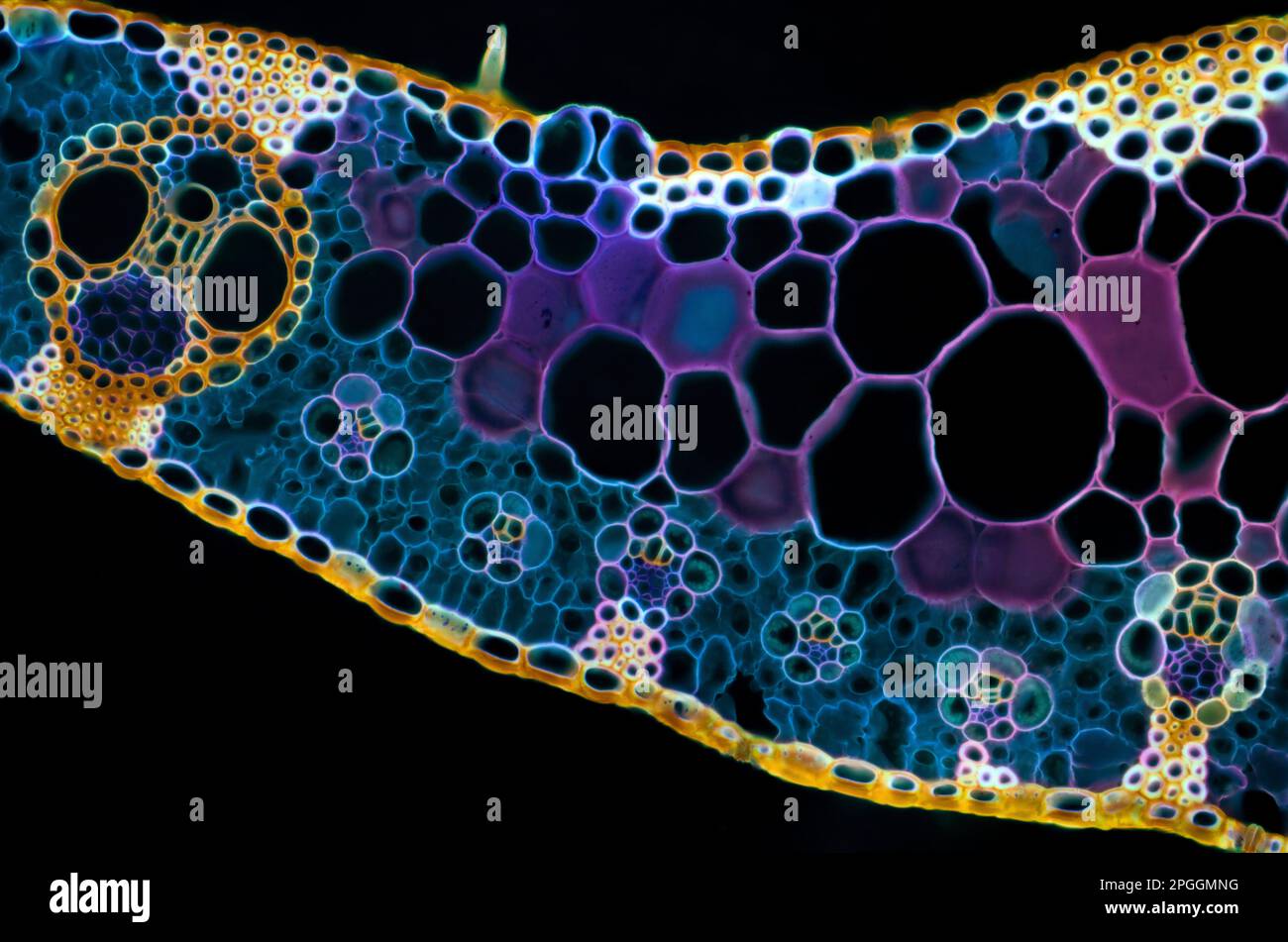Maize (Zea mays) leaf, light micrograph

Image details
Contributor:
Science Photo Library / Alamy Stock PhotoImage ID:
2PGGMNGFile size:
100.2 MB (3.6 MB Compressed download)Releases:
Model - no | Property - noDo I need a release?Dimensions:
7270 x 4815 px | 61.6 x 40.8 cm | 24.2 x 16.1 inches | 300dpiDate taken:
17 March 2023Photographer:
KARL GAFF / SCIENCE PHOTO LIBRARYMore information:
Fluorescence light micrograph of a section through the leaf of maize, or corn (Zea mays), leaf revealing the internal structure. The leaf is the main site of photosynthesis in the plant, where sunlight is converted into energy that is used to power the plant's growth and development. The section shows a distinct pattern of tissues, arranged in layers. Starting from the uppermost layer, the leaf is covered by the epidermis, which is a layer of cells that provides a protective barrier to the external environment. The epidermis is typically covered by a waxy cuticle that helps to prevent water loss through the leaf surface. Below the epidermis is the mesophyll, which is the main tissue involved in photosynthesis. The mesophyll is composed of two layers: the upper palisade layer and the lower spongy layer. The palisade layer is made up of tightly packed, elongated cells that are rich in chloroplasts, the organelles responsible for photosynthesis. The spongy layer is composed of loosely packed, irregularly shaped cells that provide a large surface area for gas exchange. Embedded within the mesophyll are the leaf veins, which are made up of two types of vascular tissue: xylem and phloem. The xylem tissue is responsible for transporting water and minerals from the roots up to the leaves, while the phloem tissue transports sugars from the leaves to the rest of the plant. The leaf also contains specialised structures called stomata, which are small pores that allow for gas exchange between the leaf and the external environment. The stomata are typically located on the underside of the leaf and are surrounded by specialised cells called guard cells, which control the opening and closing of the stomata. Overall, a section through the leaf shows a complex arrangement of tissues that work together to facilitate photosynthesis, gas exchange, and water and nutrient transport.